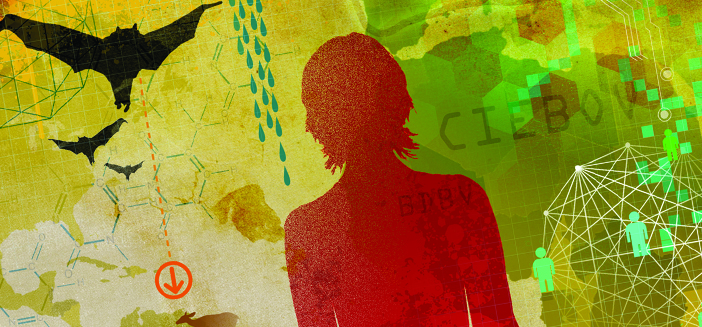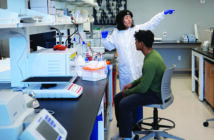Is environmental change fueling the next pandemic?
The outbreak of the terrifying hemorrhagic fever Ebola in Guinea earlier this year claimed more than 120 lives as it rampaged across the West African nation from remote jungles to its urbanized capital, Conakry, then jumped the border to Liberia and beyond. The virus, which kills up to 90 percent of its victims, is transmitted by bodily fluids, with an incubation period of as long as three weeks giving infected people plenty of time to travel far and wide before falling ill.
Travel is much easier these days as Guinea’s tropical forests make way for villages, farmland, mines, and the roads that connect them. It’s that ease of movement, allowing the virus to quickly spread to a major city and to Guinea’s neighbors, that prompted the organization Doctors Without Borders to call this particular Ebola outbreak “unprecedented.”
But it’s the epicenter of outbreaks like this, where an infectious disease first takes hold, that most interests a new team of researchers at Brown. It’s unknown now how, exactly, this happened in this epidemic, but a common means of transmission occurs when people eat fruit bats and monkeys, which host the virus, or come into contact with the animals’ bodily fluids during hunting and preparation. Ebola, which was first identified less than 40 years ago, is just one of many diseases whose spread may be abetted, and accelerated, by human-induced environmental change.
“Loggers are cutting their way into the heart of Africa, which gives more access to hunters, who have more access to myriad wildlife that may carry novel pathogens,” says Katherine Smith, PhD, assistant professor of ecology and evolutionary biology, who cited HIV as another, particularly catastrophic example of that phenomenon. “In places where we were not in contact [with species]before, now there are more opportunities for pathogens to spill over and harm us.”
Climate change, furthermore, may exacerbate conditions more conducive to epidemics, including expanding the ranges of disease agents as well as host species. “In my field of disease ecology and biogeography, whether a warmer world will be a sicker world is hotly debated,” Smith says. “Some scientists have worried that vectors that transmit tropical diseases will move into regions that are becoming more tropical with climate warming.”
But solid data has yet to back up this theory. So two years ago, Smith went looking for it. “I was interested in trying to get a better sense of the distribution of human infectious diseases in the context of a changing environment,” she says. “There is a surprising lack of information in where [infectious diseases]occur around the world. That’s bizarre, right?”
Agencies like the World Health Organization, it turned out, did have the data she wanted but not in a format that she could easily mine. Following an epidemic, the WHO and others offer aid to local medical teams and then write a report with the causal disease, number of cases, locus of the outbreak, and other pertinent information, Smith says. The records were a potential goldmine. Except for one small detail.
They’d been doing this for decades and had tens of thousands of records, but they were all written like news stories,” she says. The dataset she compiled, going back to 1980, encompasses more than 12,000 outbreaks of 215 human infectious diseases, in nearly every country in the world. In all, the reports documented more than 44 million cases.
-
 Under One Roof
Under One Roof
An interdisciplinary team is taking a collaborative approach to defining the link between global epidemics and climate change. Read more…




